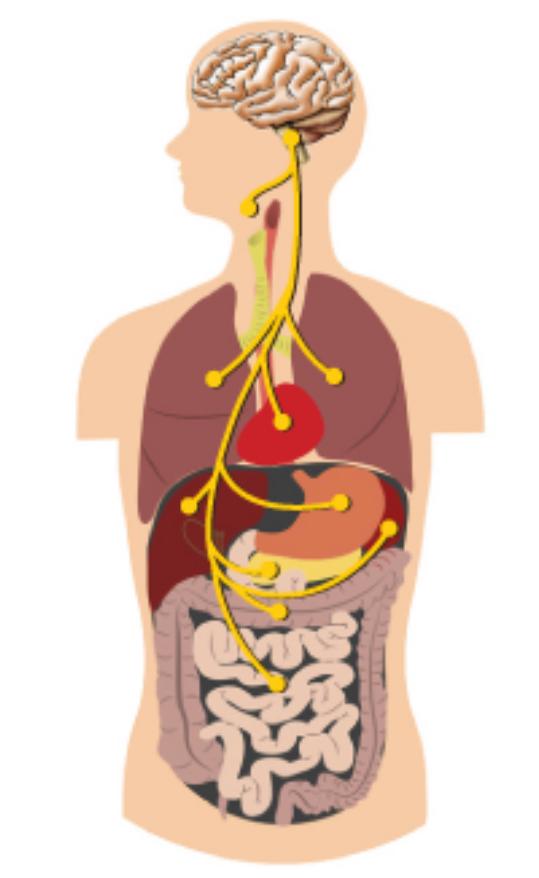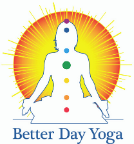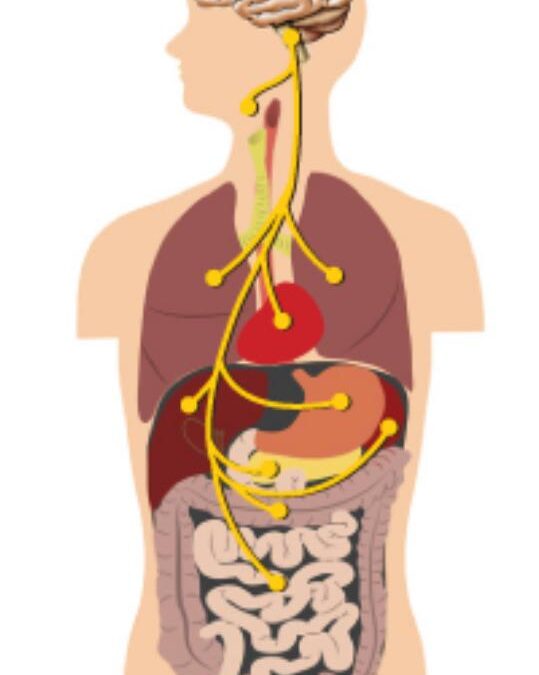
Hello everyone!
I hope this finds you healthy and safe especially since my June blog is all about finding a sense of safety. Feeling safe is the prescription. Thank you so much for having subscribed to my newsletter. I so appreciate each and every one of you!
As a trauma-informed yoga teacher, I’ve studied various aspects of how trauma affects our nervous system and our ability to respond in different situations. I’ve mentioned my parents were prisoners of war during World War II and had undiagnosed PTSD. My childhood environment could be volatile at times.
I grew up saying “the glass was half full” in that I could always but always sense when someone was even a little bit miffed because my radar was permanently up. Having your “radar” turned up permanently, however, is not a good thing for your health. The only time your body regenerates and heals is when it’s in the rest and digest / parasympathetic nervous system mode. So my yoga and meditation practices have become a lifeline toward healing.
Evolutionarily, we detect danger quickly because this talent helps us to survive. So we automatically prioritize noticing when something’s not right or feels threatening. This is a good thing. The oldest part of our brain is all about survival.
As mentioned in my last blog, the vagus nerve stretches from the brainstem all the way into the belly, carrying incoming information from the nervous system to the brain and from the brain back to the nervous system. Literally the mind-body connection, it’s the cabling behind your “gut instincts”, governing things like the heart rate, digestion, sweating and skeletal muscles. The vagus nerve (yellow line in photo below) innervates the ears, intestines, organs, heart and lungs, connecting neurologically to all organs of digestion, respiration, heart and around the face. It sends information from the bottom up and from the top down. It brings in information from our external world as well as our internal world and is a major player in our health and well-being.

When we’re feeling safe and balanced, the vagus nerve, which is a part of our rest and relax/digest or parasympathetic nervous system, allows us to connect easily with others—to turn on our healing capacity. But the vagus nerve also allows us to protect ourselves.
In my trauma-informed training, we studied Dr. Stephen Porges’ Polyvagal Theory. This theory helps us understand how our body responds in different situations depending on our history. There are three evolutions of our vagus nerve: the old vagus (reptilian), the dorsal vagus nerve, and the newer vagus nerve.
The newer vagus nerve innervates many of our facial muscles, our throat and voice box. Our first avenue to make a connection and befriend someone is to use our kind eyes, our smile, the prosody (rhythm, pitch, intonation) in our voice. It’s our first go-to. If that doesn’t work, our body goes into fight/flight mode—the sympathetic nervous system mode. We either stay and fight or we turn and flee to resolve the issue. If neither of those first two options work, we go into freeze mode—like the infamous possum. We play dead. Our body actually moves toward going numb—which is a gift if we’re about to be harmed. Our respiration also slows.
Our body automatically detects risk based on our history. The way we detect risk changes when we’ve experienced trauma. When we’ve had a history of trauma, more things—if not everything—feels like a threat. Our body responds based upon the situation or person’s mannerisms, tone of voice, their unfriendly or friendly gaze. We may not know exactly why we’re feeling uneasy or threatened, but we do. And it doesn’t always makes sense.
I mean, we might know there’s nothing to be afraid of rationally but our body is responding automatically. We can’t control this automatic response. So there are times we feel hijacked by our body. We might wonder “why did I feel uneasy?” or “why did I not trust that situation or person?” or “why don’t I like that person?” Or—the big one: “Why did I react so ridiculously just now?” Because sometimes we do and we don’t know why.
My husband and I know what I like to refer to as our Achilles’ heals. We know our patterns and what our triggers are. We all have them to a degree. Did your big brother always pick on you about a certain thing? Did someone in authority put you down often? Were you unable to do anything right according to this person? Were you bullied in school? All of these past situations will affect how you automatically respond in the future to similar situations.
Getting to know your own personal patterns and triggers is part of the healing process. Getting to know those of your loved ones or friends is also part of a mutually understanding relationship. If you treasure someone, get to know them or why not just be kind no matter what in the face of what might seem like an overreaction? Easier said than done, I know.
Keep in mind that it is everyone’s right to feel safe. Feeling safe is the prescription. That is where the healing begins.
Trauma gets embedded into the body. We can end up unconsciously scanning and looking around for danger. This is read by the vagus nerve and is sent to the brain where it then connects it to feelings, emotions, sensations, thoughts, beliefs, experiences that are happening below the level of our awareness. Even things that aren’t the “big fire” feel threatening. We become hyper alert. We lose our clarity of what danger cues actually are and we feel like nothing is safe. We then lose a connection to the outside world as well as to our internal world. We may start to lose feeling in our body.
People who have experienced a history of trauma can lose the sense of proprioception—of where their bodies are in space. This is where yoga practices incorporating grounding poses where we consciously cue our feet connecting to the earth, or our hands connected to the feel of the mat below us, become a healing practice.
Someone who has experienced a lot of trauma have lost a sense of safety. The world becomes a dangerous place and they then make choices about their life, career, relationships, etc. based on trying to avoid things that do not feel safe. This affects their self-worth.
People with a history of trauma may continue to go back to the trauma in their mind and reenact the trauma in an attempt to gain clarity and control. This often ends in over reaction. It’s a constant struggle.
Taking the time to find grounding practices if you tend to be a worrier or someone who has recurring anxiety is crucial to your long term health. Read that last sentence again. It might be yoga or it might be meditation. It might be Qi Gong, Tai Chi, knitting, gardening or simply going for a walk every day. Just choose a practice you know brings you to center and do it often.
Yes, start when and where you can but repeat often. You can build a resilient nervous system when you incorporate several breaks throughout the day of your chosen mindful activity.
My favorite practice is taking a minute to bring my attention to my breath, breathing deeply for three to five rounds then moving on. This can be the same break you’re taking from your computer screen to look away and refocus for the health of your eyes. Refocus on something else like the beauty of nature outside your window.
I also have noticed I’ve been clenching my teeth—which is always a sign of stress. So whenever I notice my teeth clenched, I release my jaw and silently say to myself: “I am open to receive”. I also then add the tip of my tongue connecting to the upper palate just behind the front teeth. This is an energetic connection of both our governing and central meridians—the two main meridians encircling our torso.
Doing something once or twice a day is a great start but doing something small several times a day is the way to keep your nervous system from going to an extreme up or down. This builds your immune system resilience. And isn’t that what we’re all after right now?
Finding safety moment to moment is the healing prescription. Finding grounding practices to practice regularly will begin to provide a sense of safety that you can create within yourself. It will give you a small sense of control. Finding relationships that are non-judgmental and supportive are also a healing balm. I’ve told my husband of 37 years that he’s healed me “nine ways to Sunday”. Are you that person for someone? Can you be?
Begin to understand why your loved one is shutting down, why they detect threats, why they are doing the best they can in any moment given their history and what signals their bodies are sending to their brain. We can appreciate. We can empathize. We can encourage. Oh—and do more yoga!
Namasté,
Sandy Krzyzanowski
Better Day Yoga, LLC
~
Mail to: 5024 Oxborough Gardens
Brooklyn Park, MN 55443-3990
(612) 708 6900
Have you grabbed your Free “21 days to optimizing your innate energetic potential” available on my new website yet?
Description: Using various segments from my archived newsletters I provide a dedicated 21 days of easy to do practices, meditations, diet/food recipes and suggestions plus other fun topics to follow along as you get to know your energetic/chakra system! This piece will explain what your seven basic chakras are, why they’re important, and how to work with them to bring balance. (Go here and then scroll down to the bottom past the “Kind Words” section to enter your email address.)
Zoom, zoom zoom!
I’ve converted all of my private classes onto Zoom during this unusual time and plan to stay that way for the unforeseen future, given social distancing requirements, the age of many of my students, etc. I am considering adding a Thursday Zoom yoga class at 1:00 PM. The three person minimum would still hold. What are your thoughts? Do you have a couple of friends who’d be interested in meeting with you in a Zoom class? Let’s discuss!
I am also considering doing a Yoga Nidra (often referred to as Yogic Sleep) class on that day. This ancient practice has incredible relevance in the modern world. With an excess of tension and worries, discomforts and uneasiness, fears and phobias, Yoga Nidra is a vehicle to connect deeply to our true nature, to peace, health, and self-awareness. Would something like that interest you? Please let me know!
Six Weeks to Inner Resilience
Also, check out my new workshop—which could easily be converted to Zoom if you have a group that’s interested:
Six Weeks to Inner Resilience!
Or if home sheltering has got you wanting to spruce yourself up, you can try my online:
Facial Exercise, acupressure, self-massage class
Turn back the hands of time and learn some basic facial exercises that add muscle tone and a fresh glow to your complexion—and have a lot of fun in the process! No needles or chemicals involved. Be prepared to touch your own face (deciding whether you want to wear make-up to class is up to you!). We’ll cover specific exercises for your eyes, cheeks, nose, chin/neck, as well as your overall face. I’ll also cover some facial acupressure points, self-massage techniques, skincare tips, essential oil considerations as well as some tools of the trade you can consider. Learn more here.


